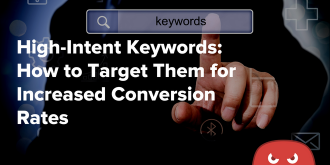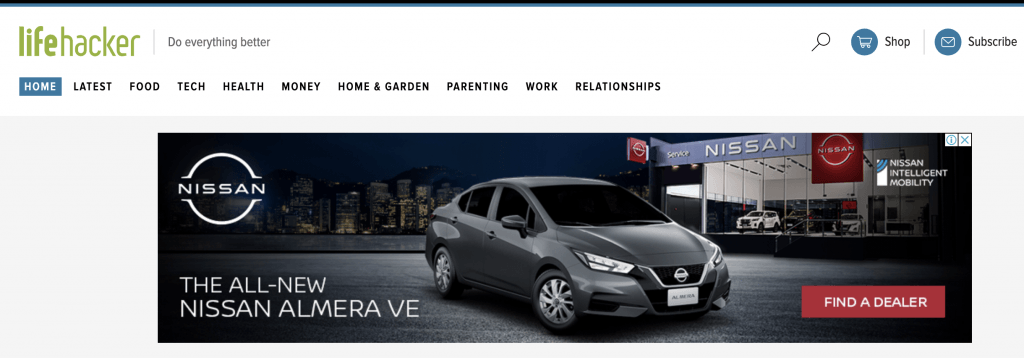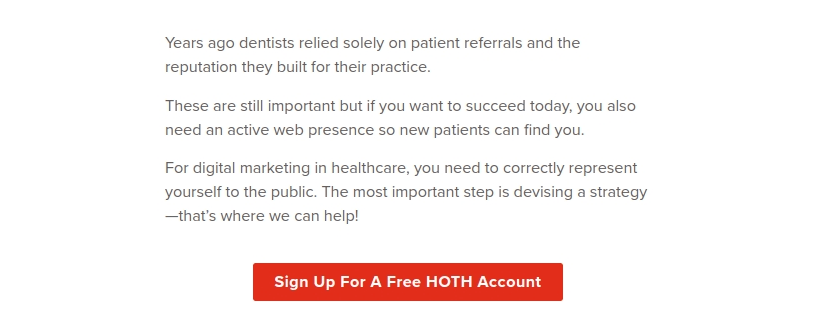Quick Links
57% of internet users say they won’t recommend a business with a poorly designed website; as far as web pages go, few are more influential than your website’s homepage.
Without a well-designed homepage, your website will never perform as well as it should.
The remaining article will look at what makes a great website homepage content and the best practices to ensure you take full advantage of this valuable virtual real estate.
Ready to learn?
What Is A Website Homepage?
Think of your home page as the starting point on a potential customer‘s journey.
When they type in your domain name, your home page is the default page that loads in their browser.
Most homepages contain important information and facts about your business.
In fact, 64% of the website visitors want to see the company’s contact information on the homepage.
Although it’s typical to have a navigation bar to lead visitors to other pages on your website, a call to action (CTA) is also vital to success.
Additionally, here are a few tips for improving the functionality of a killer homepage:
- Keep your website design fresh, simple, and unique
- Make it mobile-friendly
- Social media buttons for easy sharing
- Showcase your products and services
- Consider your page load speed
- Keep your homepage organized
- Content is vital to success
- Consider your color scheme
- Use relevant, targeted keywords
A well-designed homepage must hit your website visitors‘ pain points and show that you know how to help them.
For example, 36% of customers click on logos to reach the homepage, so a well-designed website should have a clickable logo that sends users back to the homepage.
Unless you can solve their problem, potential customers will never make a purchase.
You solve their pain points by addressing:
- The problem or challenge your target customer is suffering from
- Asking what they need and giving it to them
- Asking questions that lead to answers
- Providing clear, simple solutions that can be digested while scrolling
What are the Benefits of Having a Homepage?
Some web experts describe your website’s homepage as the “welcome mat” of a nice home, inviting potential customers inside.
The more inviting the mat, the more potential customers enter.
Remember, when visitors first land on your site, they have no idea what they will find inside.
A well-designed, bright, bold homepage with well-written web content (including testimonials) will convince them to enter because it makes a fantastic first impression.
Here are a few benefits to having a knock-out homepage:
- Online presence
- Increased SEO efforts
- Increased credibility
- Content marketing expansion
- Boost in advertising
Here’s the thing about most internet searchers and website visitors; they aren’t interested in what you do so much as what you can do for them.
Putting several excellent benefits your services or products provide front-and-center is vital on your homepage.
A short list of some of your top benefits that are easy to read, engaging, and compelling will go far in converting visitors to customers.
What Should Your Homepage Content Contain?
Several sections are essential when crafting an engaging, inviting, and persuasive homepage.
A digital marketing content strategy is critical for the success of any website, let alone a homepage.
Some elements of a website’s homepage are more vital than others, but all are necessary to get the highest conversion rates, time-on-page, and CTR.
They include:
- The Opening header
- Subheadline
- Call to Action (CTA)
- Supporting Image
- Benefits
- Social proof
- Navigation
- Content offer
- Features
- Resources
- Success Indicators such as case studies
More than anything, your homepage content makes that critical first impression on a new visitor.
You have about 10 to 20 seconds to do this, so getting your homepage content strategy right is critical.
If a visitor lands on your website and isn’t wowed, impressed, or intrigued by what they see, you’ve lost the race before they even fired the starting gun.
Methods to ensure a high-quality homepage:
It’s highly unusual for a first-time visitor to a website’s home page to make a purchase. That’s why having a link to your resources is vital.
That gives your visitors relevant information and, more importantly, improves their time on the page..
Here are some methods to make sure you have high-quality homepage content:
- Ensure your website can load quickly
- Use an introductory video to grab their attention
- Highlight your most engaging content to engage searchers
- Give visitors an excellent mobile experience (Google may penalize you if you don’t)
- Use a heat map tool to see exactly where searchers are looking on your website
Providing excellent resources also helps you establish credibility as an expert in your market or industry and improves your homepage user experience.
Additionally, there’s no denying that potential customers like getting free stuff, especially when it’s something that can help them solve a problem, learn something new, or simply make them laugh.
An e-book, white paper, how-to guide, free trial, contest, checklist, whatever. If it’s free and fits their current need, it should be on your homepage and ready to download.
How do I write my website’s homepage content?
Within moments of landing on your homepage, visitors already have a generalized first impression of your business.
Your homepage content needs to give them a clear understanding of who you are and what you do.
You also want to invite them to explore; if they don’t like what they see, you’ll get a high bounce rate.
If, however, you wish to write your homepage content yourself, here are some excellent tips for doing it:
- Star with a “Hero Message.” This bit of content is a “hook” message that gets people to pay attention. It should be short, specific, and instantly understood.
- Write about what your potential customers want to know, learn, hear, etc. Remember, it’s not about your company; it’s about them, their wants, needs, desires, etc.,
- Write short, concise, easy-to-digest bits of information rather than long-form info that takes too much time to digest.
- Explain, in laymen’s terms, how you solve your customers’ problems and pain points.
- Provide proof that what you say you can do, you can do.
Website’s Homepage Headline and Subheadline
Your homepage headline must be clear, concise, and simple.
If a visitor needs to stop and think, your headline has failed.
For example, LifeHacker has a website headline we love; “Do Everything Better.”
It’s short, super-easy to understand, and gets its point across instantly.
Here are a few excellent tips to craft an excellent headline that works well:
- Make your headline unique, something that’s not been done before.
- Be very specific with the words, phrases, and terms.
- Give away something useful. People love free things.
- Use adjectives that grab people’s attention.
- Always state the obvious. Don’t make people work to figure out what your headline is saying.
- Don’t be afraid to use emotionally-packed words.
Nearly as important as the website headline, the sub-headline should discuss a common pain point that your products or services solve.
It should also describe how your product or service will improve a visitor’s life.
A Primary Call to Action (CTA) is Fundamental to your Website Homepage Content
One of the primary goals of your website’s homepage is to move potential customers further down the sales funnel.
One of the best ways to do that is with a call to action or CTA. As the name suggests, a CTA should compel a visitor to take action in a specific way.
Ideally, a CTA should be 4-5 words maximum, which is not a lot of word real estate.
Some of the best homepage CTAs are used frequently, including:
- Try TheHOTH for Free
- Click to Make an Appointment
- Sign Up Today
- Download Our Free eBook
- Create Your Free Profile
Your call to action should be in a different font and color and be bold to make it stand out on your homepage.
An Eye Catching Supporting Image Grabs Potential Customers’ Attention
Research shows that about 65% of the general population learns visually.
That means, to retain information, 65% of people need to see it.
It also means that a supporting image is critical on your website’s homepage. A supporting video isn’t a bad idea, either.
Think about your supporting image as the front page of a menu at a fine dining establishment.
When you see that picture, your mouth starts watering, and your brain starts thinking about all the yummy food you’re about to eat.
That’s some powerful stuff, we think you’ll agree, and it’s why your homepage needs a high-quality supporting image front and center.
Here are a few tips for picking the right images for your homepage content:
- Pick a high-quality hero image
- Keep your images relevant
- Showcase real people if you can
- Optimize for an SEO homepage design
- Choose the correct file type
Social Proof and Testimonials are Gold for a Website Homepage
Social proof is today’s “word of mouth” advertising and a necessity on every successful homepage.
You can scream from the mountaintop how wonderful your services or products are, and some people might believe you. But, if you have several customer testimonials and include their pictures, many more people will believe what you’re saying.

Here are a few suggestions for gathering social proof:
- Here are a few tips for getting social proof:
- Use endorsements
- Display your reviews and testimonials
- Give your customers incentives for writing reviews
- Create surveys or case studies and share the results
This last essential element for your website’s homepage is similar to social proof but even
more powerful.
Awards, accolades, and recognition by famous people or celebrities all show web searchers that, hey, this business has it going on!
Maido, one of the top 50 restaurants in the world, lets visitors know it right on their homepage.
Social proof can sometimes be more powerful than testimonials, but a good mix is best.
Homepage Navigation Reduces Bounce Rate Significantly
Navigation is essential on your homepage to reduce its bounce rate, the number of people who click on your home page but never click on another page afterward.
Like a well-drawn map, your home page should give visitors a straightforward menu they can use to go to any other page they desire.
It should be well structured, easy to find, and even easier to use.
Well-designed navigation will keep your bounce rate to a minimum and ensure visitors see more than just your homepage.
Final Thoughts
Like the display window of a department store, your website homepage has a very specific purpose; draw customers inside where you can charm them with your wares and convert them into customers.
Need some expert advice?
We got you!











Great read, Emilie.
Short doodly videos demo-ing your product on the hero section of your site is a smart strategy to increase opt-ins and conversions. I have found testimonial videos on the homepage useful in engaging new users too. It also increases their dwell time.
One other amazing conversation rate optimization technique is personalizing the CTA button, e.g “Yes, sign me up!”. This has proven effective because generic CTAs have become uninspiring over time.
Thank you so much for this Emilie. This is exactly what I have looking for as I am currently trying to figure out my perfect homepage.
Enjoyed reading the post and also got a good idea of including a short and shiny video on our website’s homepage. Thanks, Emilie and Adetola.
Thank you so much for this. So glad I found this. When it comes to deciding what exactly to put on the homepage it can be a little confusing. When you look at different websites they all vary with some sharing the same sections. This definitely answered my question. Excellent post!
very good explanation, thanks for the information , thanks Emily